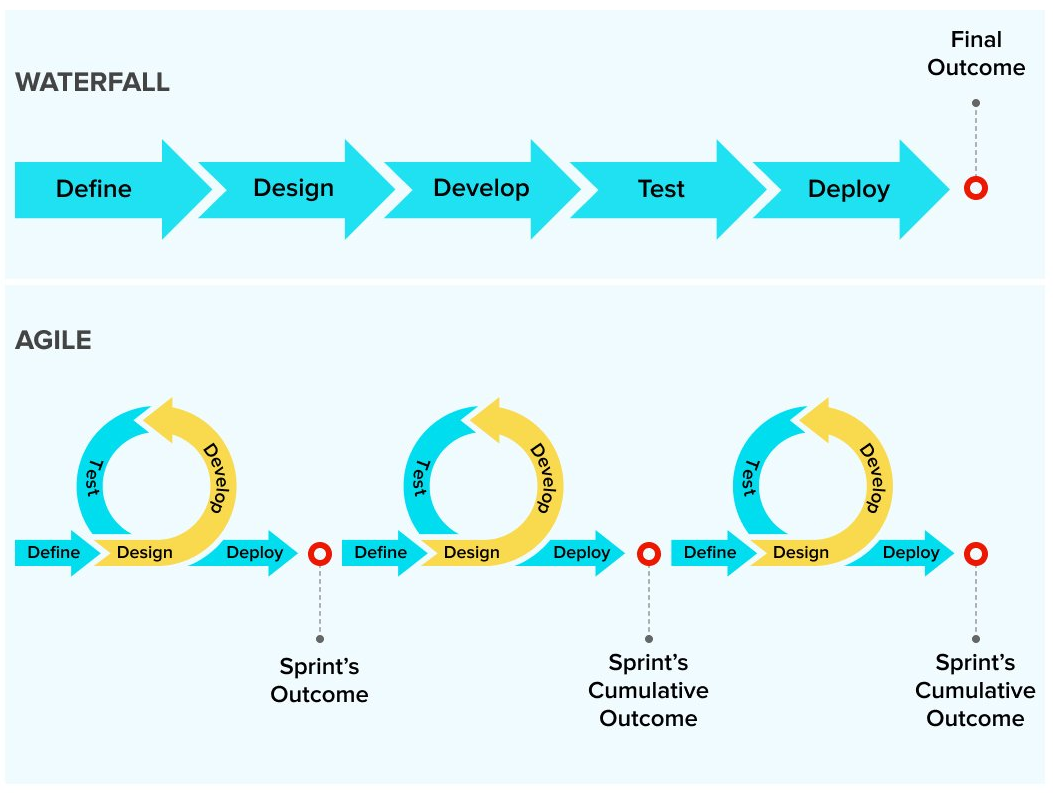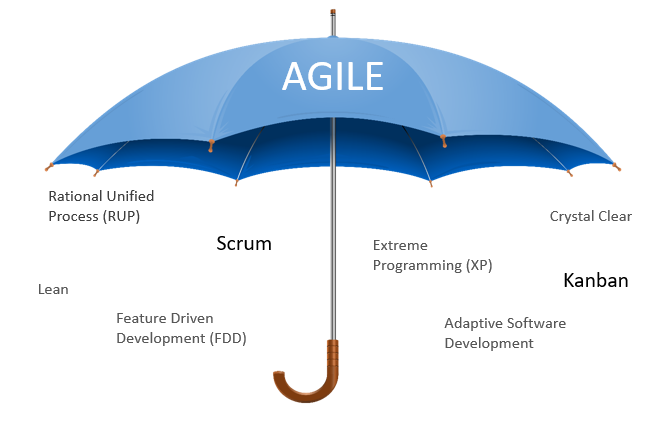Agile Software Development
What is Agile Software Development?
The agile style of software development refers to the software development process, which highlights team collaboration, incremental delivery, continual learning, and continual planning rather than trying to deliver all at once at the end.
Agile would focus on creating the minimum possible products and process lean, going through several iterations before finalizing anything. Feedback would be gathered and implemented continuously. It is a dynamic process in which everyone would work collaboratively towards one goal.

Scrum and other leading Agile methods
Agile software development is a set of frameworks such as Scrum, Extreme Programming, or Feature-Driven Development (FDD). Agile software development involves practices such as pair programming, test-driven development, stand-ups, planning sessions, and sprints.

The Agile Manifesto consists of 12 principles that guide the software development approach. These principles help determine the appropriate actions in a given context:
- Customer satisfaction is achieved through consistent and timely work delivery.
- Tasks should be broken down into smaller parts that can be completed quickly.
- The best results come from self-organized teams.
- Motivated individuals need an environment and support to succeed, and they should be trusted to get the job done.
- Processes should be created to promote sustainable efforts.
- It is important to maintain a steady pace for the work being completed.
- Changes in requirements should be welcomed, even if they occur late in the project.
- The project team and business owners should meet daily throughout the project.
- The team should regularly reflect on their effectiveness, adjust their behavior, and make necessary improvements.
- Progress should be measured consistently.
- We should strive for excellence continuously.
- Leverage change as a competitive advantage.
